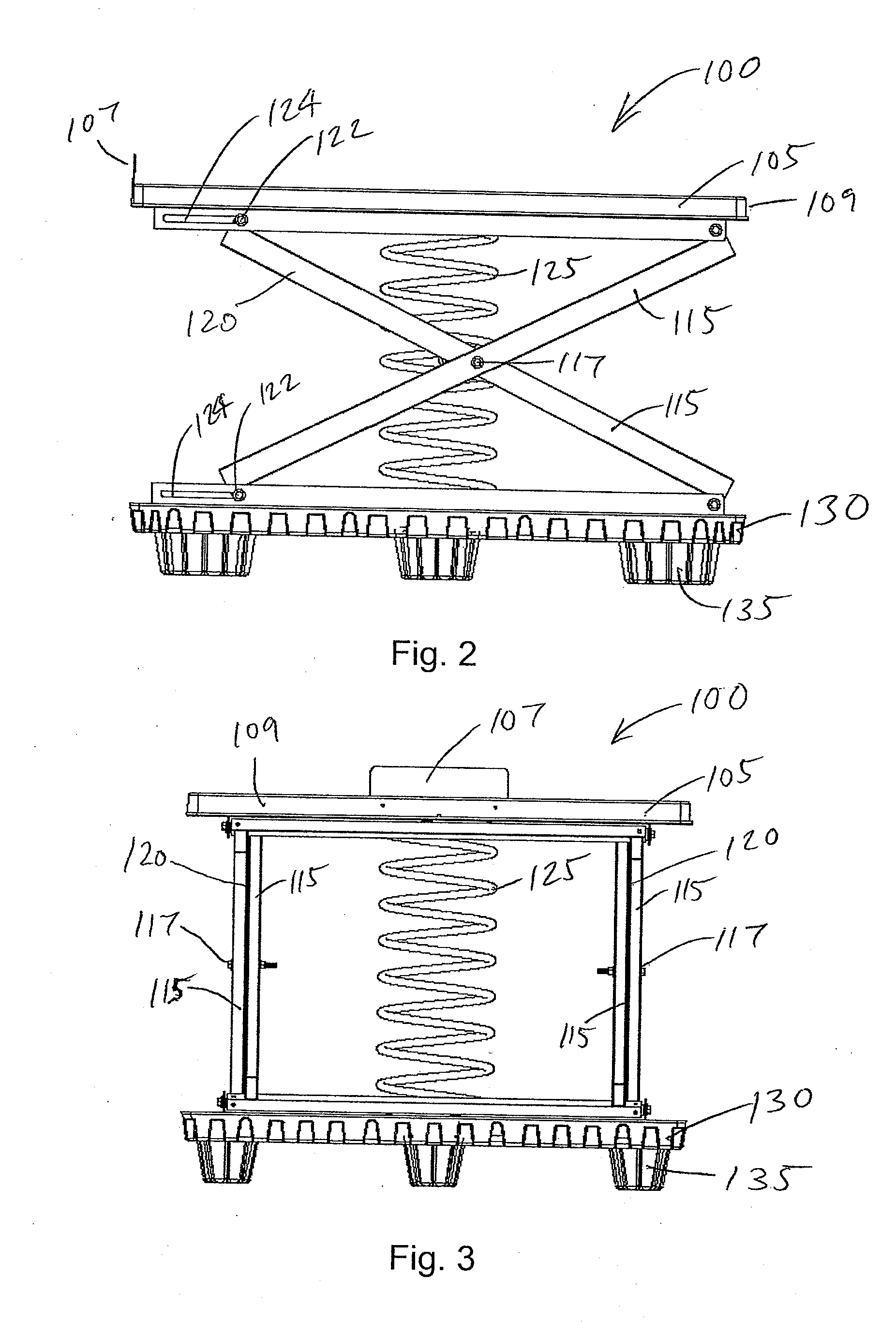Product-Lifting Display and Merchandising System
a product display and merchandising system technology, applied in the direction of transportation and packaging, machine supports, other domestic articles, etc., can solve the problems of visual clutter, difficult navigation for shoppers, and product arrangement may not be well-suited for retail display, so as to improve the inventory management of pallet-based products, facilitate the loading of products, and facilitate the purchase
- Summary
- Abstract
- Description
- Claims
- Application Information
AI Technical Summary
Benefits of technology
Problems solved by technology
Method used
Image
Examples
Embodiment Construction
[0025]The embodiments described herein provide a product-lifting display and merchandising system. The system is formed primarily of a lifting assembly 100, as depicted in FIGS. 1-3, which lifts product continuously as it is purchased, so as to maintain an appropriate vertical position of the product to allow for easy loading and unloading of the product from the lifting assembly 100, as described in further detail below.
[0026]The lifting assembly 100 of FIGS. 1-3 includes a top platform or “deck”105 having a flat surface for receiving product for display and merchandising. The product may be stacked on a pallet, in which case the pallet may be lifted, e.g., using a forklift, and loaded onto the deck 105 of the lifting assembly 100. Alternatively, the product may be hand-stacked on the deck 105 of the lifting assembly 100 if the product is not pallet-based. The deck 105 may have a flange or stop at one end which acts as a backstop 107 for pallet loading to prevent the pallet from be...
PUM
 Login to View More
Login to View More Abstract
Description
Claims
Application Information
 Login to View More
Login to View More - R&D
- Intellectual Property
- Life Sciences
- Materials
- Tech Scout
- Unparalleled Data Quality
- Higher Quality Content
- 60% Fewer Hallucinations
Browse by: Latest US Patents, China's latest patents, Technical Efficacy Thesaurus, Application Domain, Technology Topic, Popular Technical Reports.
© 2025 PatSnap. All rights reserved.Legal|Privacy policy|Modern Slavery Act Transparency Statement|Sitemap|About US| Contact US: help@patsnap.com



